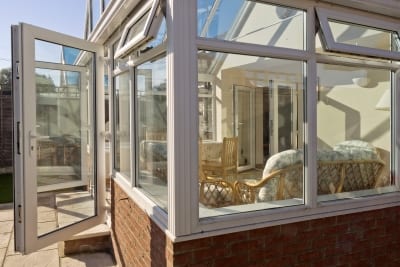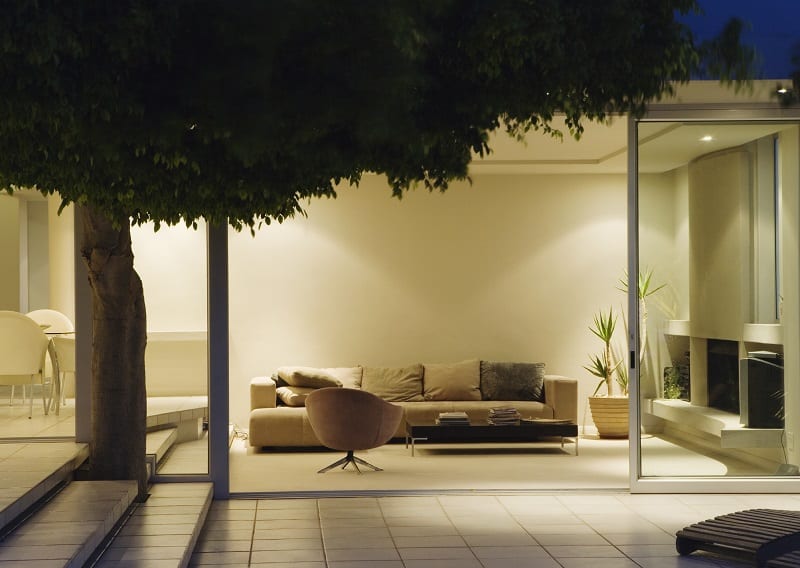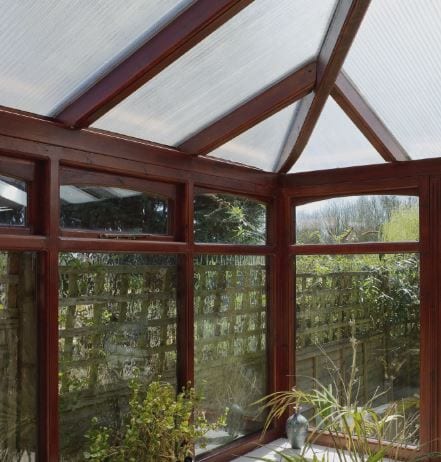Greenhouse
Are you a proud homeowner but just missing some extra light and space in your home? Then a conservatory is a solution for you. You can read more about the costs and types of materials on this page. We also zoom in on the pros and cons of conservatories and give you handy tips on saving money when buying a conservatory.
Serre prices
When you decide to build a conservatory, there are many choices to make. For example, will you go for an aluminium or a plastic conservatory? Do you opt for hr++ glass or double glazing after all? All these choices obviously affect the price. Check out the average conservatory prices here based on the number of square metres your conservatory comprises.
| Number of m2 | Average price including materials, labour costs and VAT |
|---|---|
| Serre of 10 m2 | £ 17.500 |
| Serre of 15 m2 | £ 26,000 |
| Serre of 20 m2 | £ 35,000 |
| Serre of 30 m2 | £ 25.000 |
| Serre of 50 m2 | £ 80,000 |
Find the best specialist for your project and get free quotes.
Start
What is a conservatory?
A conservatory is a glass extension on the ground floor of your house. A conservatory at home is also called a winter garden or a garden room. Lots of sunlight enters through the glass, causing the temperature to rise quickly. So you enjoy your so-called indoor garden while it’s still too cold outside. Ideal right? The conservatory frame includes plastic, wood, aluminium and stainless steel. So you have an extensive choice and there is always a conservatory that suits you and your home.
What is the difference between a conservatory and an extension?
There is often confusion about the definitions of a conservatory and an extension. A conservatory is characterised by lots of glass and is basically a kind of extension of the house. You extend the existing house with extra space. Are you planning to build an extra space (an extension), such as a garage, to your home? Then get information on the prices around different extensions. Check the costs of an extension in advance so you are well-informed about the possibilities.

Advantages of a conservatory
There is a lot of information to be found about the different types of conservatories, the prices and what to look out for when building a conservatory. What are actually the advantages of building a conservatory?
- Enlarging your living space: You immediately enjoy the extra space you create by installing a conservatory.
- Increasing the value of your home: A conservatory provides extra living space and is a nice extension of your living area. This increases the value of your home.
- No permit is often needed: Installing a conservatory on the front or side often does not require a permit.
- With a prefabricated conservatory, installation is quick: A prefabricated conservatory is delivered ready-made, so all you have to do is attach it to the house. This takes about a day. This saves you a lot of time and money.
- Lots of choices in material, style and size: Whether you want a large glass conservatory or a small conservatory, there is plenty of choice in materials and styles.
- Enjoy your garden room inside when it is still too cold outside: Your conservatory often serves as an extension of your garden. You bring the garden inside, so to speak. The conservatory quickly becomes nice and warm, allowing you to quickly enjoy the garden when it is too cold to sit outside.
- Lower costs than an extension: Because an extension is a direct extension of your house, the costs of a conservatory are significantly lower.
Species and styles of conservatories
The first choice is between a prefabricated conservatory or a conservatory specially made to measure. Look at the overview below for the features and see the pros and cons of these 2 types of conservatories.
| Customised conservatory | Prefab Conservatory | |
|---|---|---|
| Average price per m2, (including materials, labour and VAT) |
£1.000 | £ 800 |
| Lifespan | 25+ years | 25+ years |
| Advantages | – Possibility of customisation – Choice of a wider range of materials, such as steel, plastic and wood |
– Installation in one day – Suitable for many different homes – Wide choice of models – Better insulation than with customisation because of 1 whole |
| Disadvantages | – Depending on the material, more maintenance – Longer installation time |
– Less appearance – Less strong |
Species of conservatory materials
If you have chosen to install a conservatory, it is time to think about the type of material. The most popular material types are aluminium, plastic and wood. Below is a clear comparison chart in which you will find the prices, advantages and disadvantages for each type of material at a glance.
| Wood conservatory | Aluminium conservatory | Plastic conservatory | ||
|---|---|---|---|---|
| Average price per m2 | £ 750 | £ 750 | £ 800 | |
| Customised or prefabricated? | Size | Size | Size and prefab | |
| Lifespan | 20-30 years | Lifespan | Lifespan | |
| – Classic look – Easy to paint – Easy to repair |
. Easy to repair | – Strong material – Available in many colours – Possibility of applying a lot of glass – Low maintenance – Good insulation |
– Very low maintenance – Available in many colours – High insulation value – Strong and durable material |
|
| Disadvantages | – Requires relatively high maintenance – Less easy to insulate than conservatories made of other materials |
– No possibility of repainting – Does not match every home in terms of appearance |
– No possibility of repainting – Difficult to work with |
|
| Maintenance | Semi-annually | Yearly |
There are several types of styles. Read more about the 2 most chosen styles here.
Modern Conservatory
A modern conservatory gives your house a sleek look and is suitable for a new-build house. Even in an older house, a modern conservatory gives a special twist. A plastic conservatory or aluminium conservatory and a dark grey or black colour are often chosen. This gives the conservatory a familiar modern look. With a modern extension, you can choose from custom-made and prefabricated conservatories, giving you much freedom of choice. Modern conservatories are characterised by their square shape with sharp corners.

English conservatory
This conservatory is characterised by cross-frames, meaning the glass is divided into several small sections. Also, this conservatory often has a tapered roof. Although in the past wooden conservatories were often chosen as the material type of the classic conservatory, nowadays, it is also possible to choose plastic. Plastic makes it possible to go for a wood look, giving you the illusion of an original wooden conservatory.

Tips for buying a conservatory
Buying a conservatory involves a lot. That’s why we list some tips for you.
- Don’t have enough savings for your dream conservatory? It is possible to take out a personal loan or a second mortgage for this purpose. This way, you can still install a conservatory even though you don’t have the money directly in the bank. A little bit of savings? See here for tips on how to have a conservatory installed more cheaply.
- Don’t choose the first best conservatory specialist. By comparing conservatory quotes, you can determine which specialist suits you best regarding work and price.
- Pay attention to the quality marks during your search for a conservatory specialist. This quality mark guarantees the quality of conservatories. Conservatory specialists receive this quality mark if they meet requirements in the areas of professionalism and certainty, price, materials and assembly.
- Your conservatory is attached to your house, so you lose part of the heat through the conservatory. So it is smart and environmentally friendly to choose to have your conservatory insulated as well. This way, you save on energy costs and better environmental care. A simple way to insulate your conservatory is to have HR++ glass installed instead of regular double glazing. The conservatory specialist will be happy to tell you more about the possibilities.
- Check whether you need a permit to have your conservatory installed. Building a conservatory at the back of your house does not require a permit in most cases. However, your conservatory must meet several requirements. These include the height and angle of the roof. Check with your municipality what the criteria are so you won’t be unpleasantly surprised. Read some handy tips on how to furnish your conservatory below.
- Choose a purpose: Design your conservatory as a hobby room where you can give your creativity free rein. Think, for example, of a painting room where you draw inspiration from the garden. This way, you create the most beautiful works of art from the comfort of your own home. Another idea is to use your conservatory as a garden room. So if your garden when it’s still cold outside. The sunlight that enters your conservatory soon makes it pleasantly warm inside. So you can enjoy the sun and your garden even during summer.
- Don’t place too much furniture: Be careful not to place too much furniture in your conservatory. With lots of light and large windows, you will make your conservatory appear optically larger with little furniture. Therefore, choose a few pieces of larger furniture and keep it quiet in your conservatory. Avoid many small accessories, which can quickly make your conservatory look small.
- Light colours: Light colours such as pastels, white and grey help make your conservatory look bigger. For example, think of a white conservatory with pastel accessories and grey furniture.
- Go for plants: Plants do very well in conservatories because of the abundance of light and the higher temperature. Therefore, choose plants that are too cold in the garden but that you love. Think, for example, of the Oleander or the Chinese rose.
- Sunblinds: Do you enjoy the sun in your conservatory but also want to be able to sit in the shade? Sun blinds for your conservatory are available for both the inside and outside of your conservatory. Think, for example, of sun blinds with horizontal or vertical lines or sun blinds in a colour. An awning specialist will be happy to tell you about the possibilities for your conservatory.
Find the best specialist for your project and get free quotes.
Start